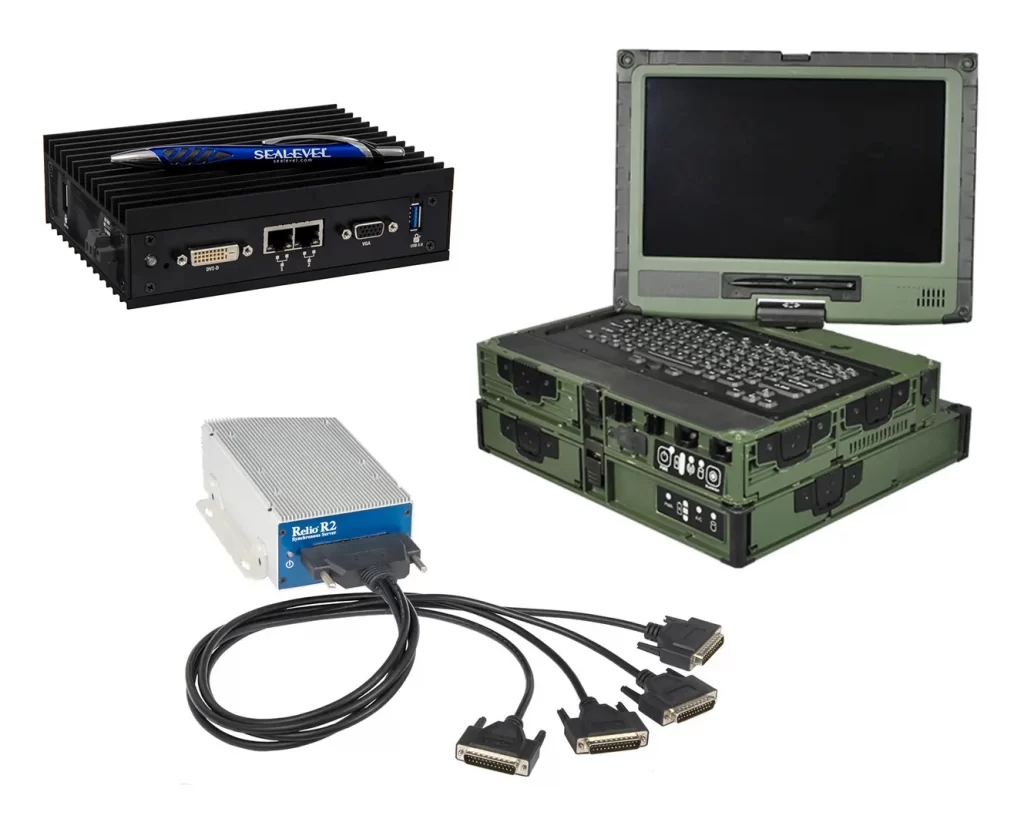Meeting & Exceeding Standards: Water Intrusion

Part of military standard MIL-STD-810G indicates a device’s ability to withstand water intrusion under various temperatures and conditions.
Rain
Rain and Blowing Rain: For material deployed outdoors without rain protection
Testing uses a wind velocity of 18m/s (40 mph) and a rain fall rate of at least 1.7 mm/min (4 in/hr). The diameter of water droplets must range between 0.5 mm and 4.5 mm. The test item is completely covered by rain for 30 minutes and rotated to ensure all surfaces are exposed. If the item is expected to operate in rain, it is operated during the last 10 minutes of rain fall.
Exaggerated: For material without rain protection and subject to an increased rain fall rate
Testing uses the same wind velocity and water droplet diameter as Rain and Blowing Rain. However, rain fall rate must be at least 64 km/h (40 mph). Each surface of the item is exposed to water spray from multiple directions for at least 40 minutes.
Drip: For material protected from rain but could be exposed to condensation or leakage from above
All upper surfaces of the item are exposed to water for 15 minutes. The volume of water must be greater than 280 l/m²/hr (7 gal/ft²/hr) and must fall from a height no less than 1 meter (3ft). Water is adjusted for items exposed to a volume no greater than 140 L/m2 /hr, and equipment is tested for 30 minutes.
Humidity & Possible Condensation
Induced and Natural Cycles: For equipment exposed to humidity during storage, transit and/or natural environments
Equipment is placed in the test chamber at a temperature and humidity setting according to projected environmental conditions for at least 24 hours. Settings are gradually increased to expected storage conditions and cycled between 15 and 90 times, dependent on environmental conditions and the test item being hazardous or non-hazardous. For equipment exposed to humidity due to natural environmental conditions, testing continues with additional cycles.
Aggravated: For equipment exposed to extreme humidity levels due to environmental conditions
Equipment is placed in the test chamber at a temperature and humidity setting according to expected environmental conditions for at least 24 hours. The temperature is gradually adjusted to 30°C (86°F) and humidity to 95%. Temperatures and humidity are cycled between 30-60°C (86-140°F) for 24 hours for at least 10 cycles.
Immersion
Immersion: For equipment likely to be partially or fully immersed in water
The test item is immersed beneath the water’s surface for 30 minutes.
Fording: For vehicles traversing a body of water or equipment secured to such vehicles
Vehicles are tested by driving through a water depth equal to expected conditions for one hour. Items are placed in a testing tank and partially submerged for one hour.
Icing/Freezing Rain
Ice Accretion: For items exposed to freezing rain or sea spray
Test items are sprayed with water cooled to a temperature between 0-5°C (32-41°F) at a rain fall rate of at least 25mm/h (1in/h). The test chamber is cooled to -10°C (14°F) and ice hardens for at least four hours. Water spray may be reapplied to build up a greater thickness. The test chamber is then set to standard ambient temperature and the test item is left to stabilize.
Freeze / Thaw
Diurnal Cycling: For equipment operated outside and exposed to melting and freezing water due to below freezing night temperatures and above freezing daytime temperatures
The test item is sprayed with water. Temperature in the test chamber is reduced by 3°C (5°F) per minute until reaching a minimum temperature according to the expected environmental conditions and maintained for one hour. The temperature is increased gradually over three hours until reaching 0°C (32°F) at which point frost should form. Temperature is gradually increased to 4°C (39°F) until the frost melts and then reduced over three hours to below freezing and maintained for one hour. The process is repeated for 20 cycles.
Fogging: For equipment transported from a cold to warm environment or vice versa, resulting in fogging or condensation
Equipment is placed in a test chamber and temperature is reduced to below freezing at a rate of 3°C (5°F) per minute and maintained for one hour. Equipment is transferred to a previously set ambient-temperature chamber with a humidity of 95% to induce condensation or fog. Equipment is tested for operation and returned to the original chamber. The process is repeated for three cycles.
Rapid Temperature Change: For equipment moved from one temperature environment (warm) to the opposite environment (cold) and back again (warm), likely to result in condensation
Equipment is placed in an ambient-temperature test chamber for one hour. Equipment is transferred to a new chamber set with a temperature just below freezing and left for one hour. Equipment is returned to the original chamber and cycled three times.

Sealevel Environmental Testing
Sealevel performs rigorous in-house testing, and creates industrial hardware solutions for equipment operating in wet conditions, including waterproof and watertight products. Sealevel’s experience includes designing synchronous serial servers, military laptop docking stations, and industrial computers to meet the requirements established by MIL-STD-810.
Categories:
